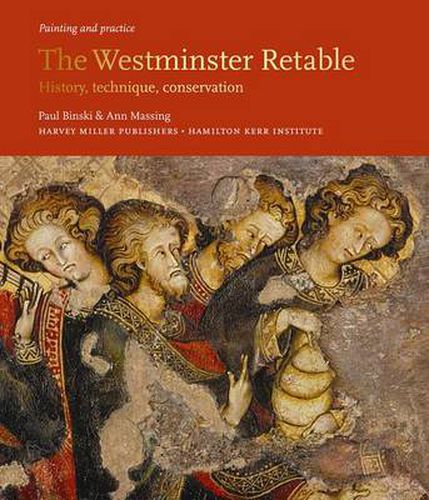Readings Newsletter
Become a Readings Member to make your shopping experience even easier.
Sign in or sign up for free!
You’re not far away from qualifying for FREE standard shipping within Australia
You’ve qualified for FREE standard shipping within Australia
The cart is loading…






The late 13th-century Westminster Retable is rightly celebrated as one of the most beautiful and enigmatic panel paintings to have survived from medieval Europe. Its history is not without tragedy. It was made in the Westminster Abbey, one of the most prestigious Gothic churches of the thirteenth century, itself a treasure-house of medieval wall and panel painting; then, after the Dissolution of the Monasteries, it was demoted rapidly to use as part of a large cupboard; its ruination in the eighteenth century just pre-dated the Gothic Revival and its rediscovery and rescue. Since then, it has intrigued commentators because of its extraordinary technical mastery, its value as an ornamental resource for study and, more recently, as an important if fragmentary link in the history of painting in England and France in the thirteenth century. There is every reason to believe that its standing as an artwork was apparent even in the Middle Ages, and that, in short, it may be seen as one of the central monuments of Anglo-French Gothic painting.
$9.00 standard shipping within Australia
FREE standard shipping within Australia for orders over $100.00
Express & International shipping calculated at checkout
The late 13th-century Westminster Retable is rightly celebrated as one of the most beautiful and enigmatic panel paintings to have survived from medieval Europe. Its history is not without tragedy. It was made in the Westminster Abbey, one of the most prestigious Gothic churches of the thirteenth century, itself a treasure-house of medieval wall and panel painting; then, after the Dissolution of the Monasteries, it was demoted rapidly to use as part of a large cupboard; its ruination in the eighteenth century just pre-dated the Gothic Revival and its rediscovery and rescue. Since then, it has intrigued commentators because of its extraordinary technical mastery, its value as an ornamental resource for study and, more recently, as an important if fragmentary link in the history of painting in England and France in the thirteenth century. There is every reason to believe that its standing as an artwork was apparent even in the Middle Ages, and that, in short, it may be seen as one of the central monuments of Anglo-French Gothic painting.